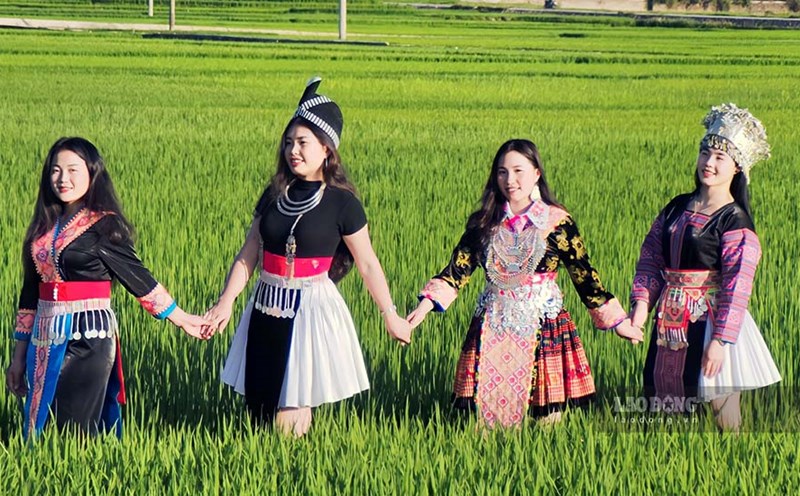They may not notice an un typical, un noticeable bowl of soup at the quarter corner. But that is the quintessence of the Thai people.
Buffalo skin bonsai soup is a clear culinary art. very mediocre, very local, very useless in eating, but turned into a very delicious dish, very nutritious for health. When thinking about Thai cuisine, I think that Thai people know how to eat more than many other ethnic groups, for example buffalo skin.
Buffalo skin, whether fresh or dry, is tough, tasteless and nutrient-free. When slaughtering buffaloes, the skin is mostly used as drums, tying shoes or tying ropes to hunt for elephants. Those functions make buffalo skin so strong and durable that it is difficult to break down. However, Thai people eat well.
From buffalo skin, Thais make buffalo leather salad, using acids secreted from sour bamboo shoots to soften the thinly sliced buffalo skin. The sour taste of bamboo shoots adds flavor to buffalo skin, combined with other spices, and suddenly we have a great dish to enjoy.
Or it is used to cook bonsai soup. Please explain, bon is the name of the Thai people in Son La for water potato trees (orocado), a tree that is easy to grow in the garden, along ponds, streams, or in dry lakes, where water flows through and out all year round, because this tree has the property of being able to survive in a humid environment.
Just need to be hydrated in a humid place to grow the plant very quickly. However, there are many types of bonsai and according to Thai experience, not all types of bonsai can be used to prepare dishes. The most suitable and delicious type of bonsai is sweet bonsai, with purple points in the middle of the leaves, this is the easiest identifying feature.
When you choose the goose, you should choose buffalo skin, which is also a very important ingredient in soup. The buffalo skin must be thick, the fur must be cleaned, burned in pink fire until fragrant, then issued with a beating and tearing. Then simmer for about 5 - 8 hours to leave the buffalo skin soft.
When we heard this, we could imagine and associate buffalo skin with tunnel bones. Because buffalo skin pickling water will be used as the sauce of bon ngon soup, only then will the soup have a sweet, delicious, and attractive taste. A very talented creation.
In addition, bonsai soup also requires another indispensable ingredient, bitter melon. This fruit is very special, called bitter taste because it is only as small as a spearhead, eating it has a slightly bitter taste, but when cooked with bonsai soup, bitter taste creates the sweetness of this dish.
Spices for making bonsai soup are also very special: come on, pat kho, onions, amaranth, squash, betel leaves, chopped silver medicine... And these are completely indispensable ingredients if you want to cook a bowl of bonsai soup to treat customers.
After picking, the bonsai tree is cleaned, the shell is removed and soaked in water. You can soak it in diluted salt water to remove the plastic and itch. Then, reduce the size and add it to the slow-moving stock from the available buffalo skin. Bon is cooked until the stewed amount is loose, the buffalo skin is chopped, because this dish has to be cooked as softly as it is delicious.
After the buffalo skin, the silver screen meat and bonsai in the pot were cooked with vegetables and spices of bitter melon, chili, macadamia, onions, salt, pasta, squash, Malabar spinach... prepared in the pot and seasoned to taste. Obviously, the softness of bonsai soup is the basic characteristic of the soup.
Regardless of the ingredients and cooking times, they must be uniform in appearance. East long cooking requires a slow and long cooking process, so nutrients are excreted to the maximum. That is the reason why Thai people consider bonsai soup to be nutritious, has the effect of curing diseases and nourishing the body.
Looking at the texture, the bonsai soup is not thinner than other types of soups but is a bit plump, like a soft soup. This texture of bonsai soup makes it available to everyone, from young children with undergrowth to the elderly who have completely lost their teeth. Clearly, soft, thick, easy to eat is the standard for evaluating bonsai soup.
We do not have to chew when eating bonsai soup because tough things such as Malabar spinach, squash, betel leaves, buffalo skin have also been chopped. When eating, you will feel the characteristic aroma of pat khen, the rich taste of bon, the spicy taste of chili, and the sweetness of meat, all of which create a rich flavor, unbleachable with other soups.
Bonsai soup can be eaten at first, like a bowl of appetizer soup, after finishing a cup of wine or after being stir-fried, you need a glass of wine, and bonsai soup is also suitable for eating with rice to ensure stability. Even when it is difficult to chew in the mouth, eating a bowl of bonh canh also ensures fullness of stomach and adequate nutrition.
Therefore, for Thais, bonsai soup is an indispensable dish in family meals. From traditional buffalo skin bonsai soup, the Thai people also created other bonsai soup versions such as bonsai soup for cooking beef, bonsai soup mixed with grilled banana leaf wrapped meat...
Not only that, bonsai soup is a typical dish for holidays and summer festivals. And when talking about the cuisine of the Thai people in Son La, it is impossible not to mention bon ngon, a elaborate, elaborate soup that expresses the creative and hospitable spirit of the Thai people. Therefore, bonsai soup deserves to be a delicious dish of the Northwest.





